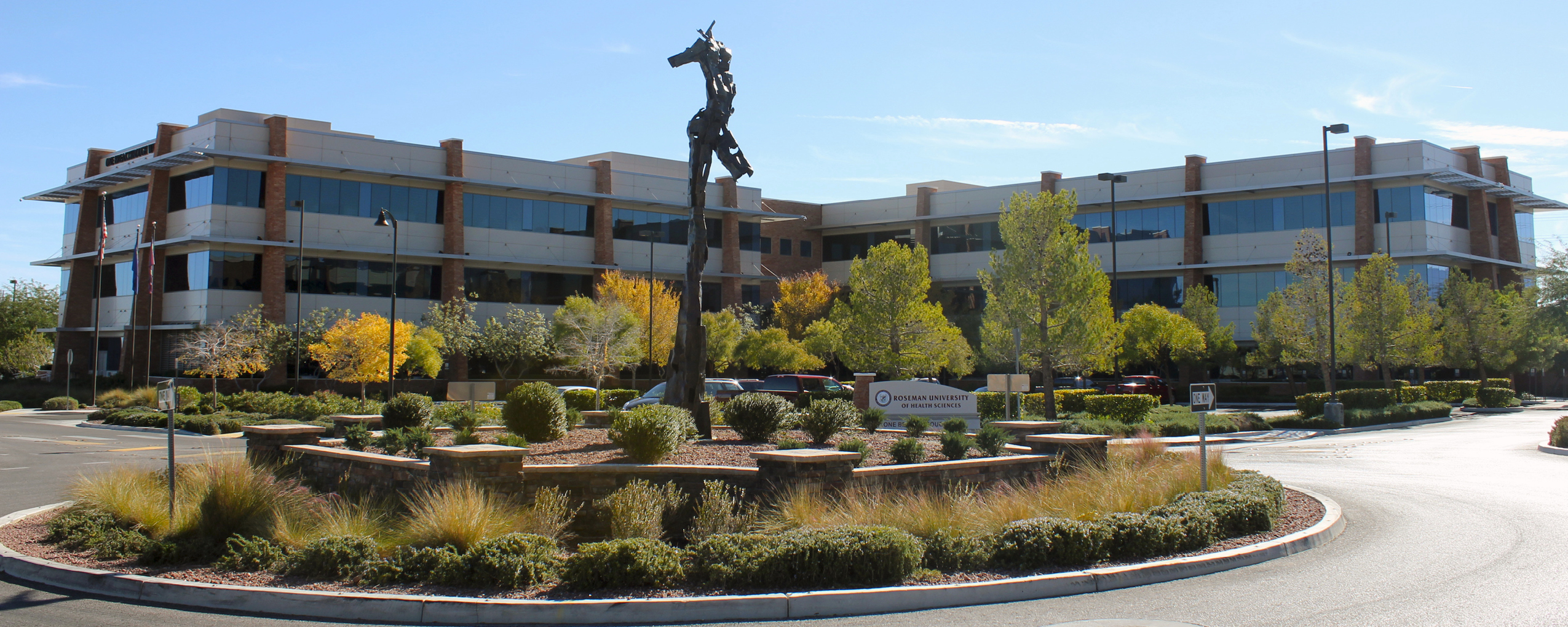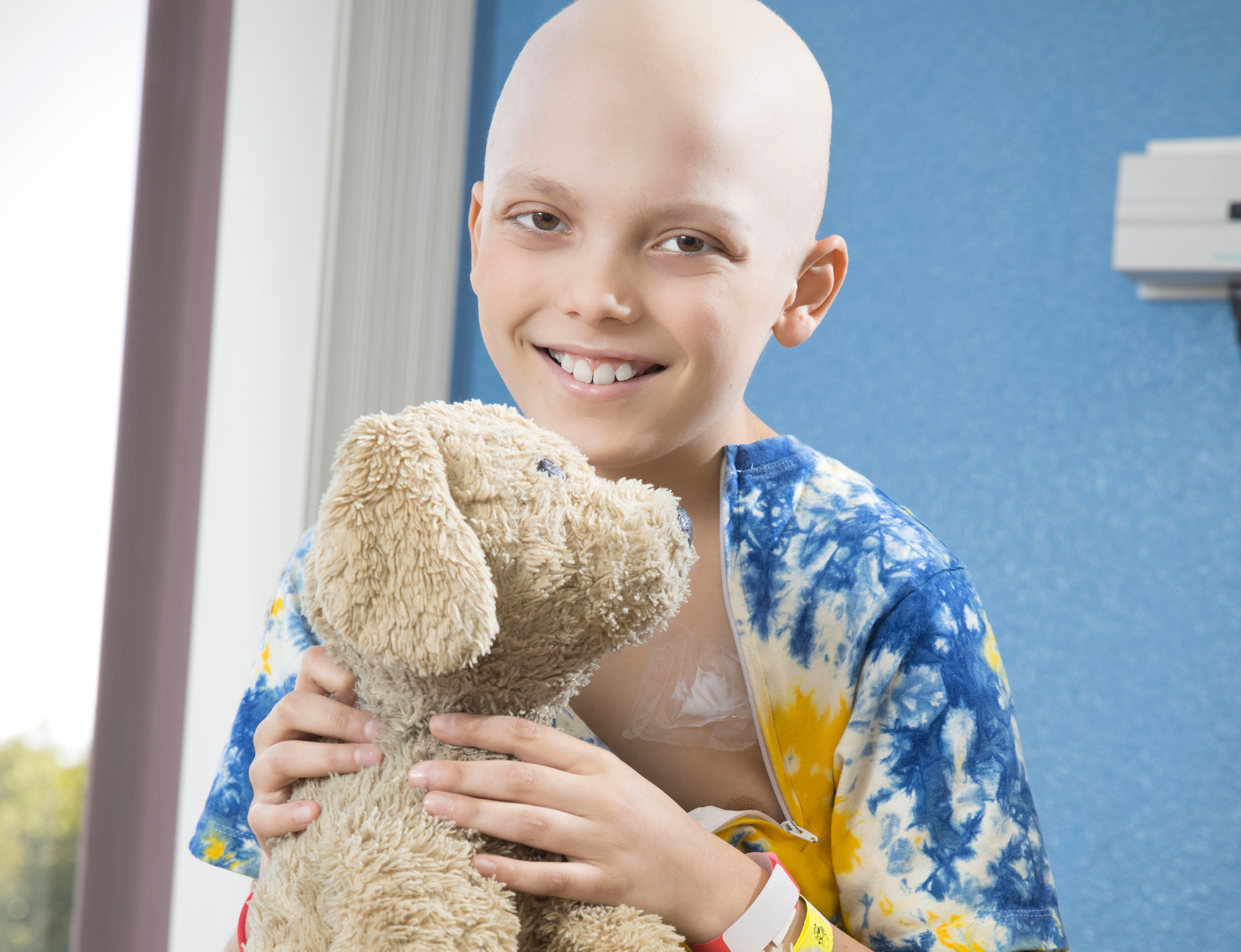Joining Forces
VEGASMD

Anyone coping with the burden of childhood cancer in Las Vegas is almost certainly familiar with the Cure 4 The Kids Foundation. The nonprofit organization operates the only oncology treatment program for children and young adults in the region. Their biggest logistical problem is also their reason for existence — there are just too many children suffering from life-threatening diseases.
“We’re ten pounds of potatoes in a five-pound bag,” says CEO and co-founder Annette Logan-Parker. “Our program has grown so much, our space hasn’t been able to keep up.”
Relief is on the way. Cure 4 The Kids is partnering up with Roseman University of Health Sciences in what is described as a “match made in heaven” by Dr. Renee Coffman, president of Roseman University. The relationship will not only give patients expanded care and resources, but also benefit medical students who require experience in real-world situations.
“This provides a seamless way for our students to engage in patient care and experiential education in a very unique environment, which is pediatric oncology,” says Dr. Coffman. “And as students graduate, there is a potential workforce here that understands the environment.”
Now an independent subsidiary of Roseman University, Cure 4 The Kids is moving its entire operation to the university’s Summerlin campus, taking over about a third of the 143,000 square-foot building that was once home to the Nevada Cancer Institute. The move is virtually turnkey, with equipment, exam rooms, and infusion suites already in place. Wings will also be dedicated to research and office space. The building still feels brand new, showing few signs of wear since being unveiled 13 years ago. Until now, Cure 4 The Kids had been squeezing its services into some cramped real estate at the Children’s Specialty Center of Nevada near Sunrise Hospital.
“By the first week of September, we’ll be a fully functioning clinic,” says Logan-Parker. “Business as usual, but in a better location.”
 Some kid-friendly decor and artwork is being added and, as could be expected, some IT updates were in order. But the most important task was rebuilding the in-house pharmacy to meet current codes and regulations. “We compound our own drugs and make all our own chemotherapy,” Logan-Parker points out. “We need to be sure we’re creating our infusions in a very clean space.”
Some kid-friendly decor and artwork is being added and, as could be expected, some IT updates were in order. But the most important task was rebuilding the in-house pharmacy to meet current codes and regulations. “We compound our own drugs and make all our own chemotherapy,” Logan-Parker points out. “We need to be sure we’re creating our infusions in a very clean space.”
A sterile environment is vital for not only customizing drugs for individual patients, but also protecting the pharmacists who are mixing the components together. “All drugs that treat cancer are pretty much carcinogens themselves,” adds Dr. Coffman. “They have to be very toxic in order to kill the cancer.
The most common form of childhood cancer is leukemia and treatment periods are long — often three years for a girl and four years for a boy. If the cancer goes into remission, Cure 4 The Kids is still there with a robust and extensive follow-up program that can involve visits to a cardiologist, pulmonologist, or gastroenterologist — or all of the above — to treat the after-effects of chemotherapy. Logan-Parker notes that patients range from newborns to those well into adulthood.
“If a person received a childhood cancer diagnosis 20 years ago in a different state, they still qualify for our long-term follow-up program and we welcome them,” she says.
Logan-Parker is all too familiar with extended hospital stays. A nurse by trade, her mission with Cure 4 The Kids was inspired by the story of her own son, who underwent 20 surgeries in a four-year period due to a traumatic football injury. At one point, doctors feared he would be ventilator-dependent, but he recovered and is now a Clark County firefighter with a family of his own. Logan-Parker says she “moved mountains” to get the research that saved his life.
“I was fortunate,” she says. “I had excellent insurance and resources I could liquidate to get him the treatment he needed. But through that process, I met a lot of families, cried a lot of tears in waiting rooms and saw a lot of children pass. I think as a community, we could have done more for them, particularly with access to research.”
The concept of Cure 4 The Kids took shape in 2006, with tax-exempt status granted in 2007. The foundation’s treatment programs received the Joint Commission Gold Seal of Approval Accreditation in 2012, a highly-coveted confirmation of strict health care standards. Although not-for-profit, Cure 4 The Kids covers costs the old-fashioned way — by billing insurance companies. While not a free clinic, treatment is provided to patients with or without medical insurance, regardless of their ability to pay. “I believe the price of poverty shouldn’t be death for a sick child,” says Logan-Parker.
The foundation’s Charity Care program helps those who are uninsured, underinsured or have leftover costs that have fallen through the cracks. “Even if a child has the best insurance, there are still co-pays,” says Logan-Parker. “There are still deductibles and high-cost drugs.”
Donation dollars are also used to recruit new physicians and keep them in place. Volunteers are welcome, but must pass a health screening and are encouraged to participate on a long-term basis. They help with anything from office paperwork to reading to young children. “We want kids to continue being kids,” says Logan-Parker. “Just because they’re sick doesn’t mean they shouldn’t play video games or hang out with their friends, who are welcome in the infusion suites. We try to make it as comfortable as possible.”
Additional support is coming from pop singer Gwen Stefani, who recently launched her first residency at Planet Hollywood on the Strip. A dollar from every ticket sold is being donated to Cure 4 The Kids. It’s a gesture that is no doubt deeply appreciated by both Cure 4 The Kids and Roseman University as their new partnership begins to take shape.
